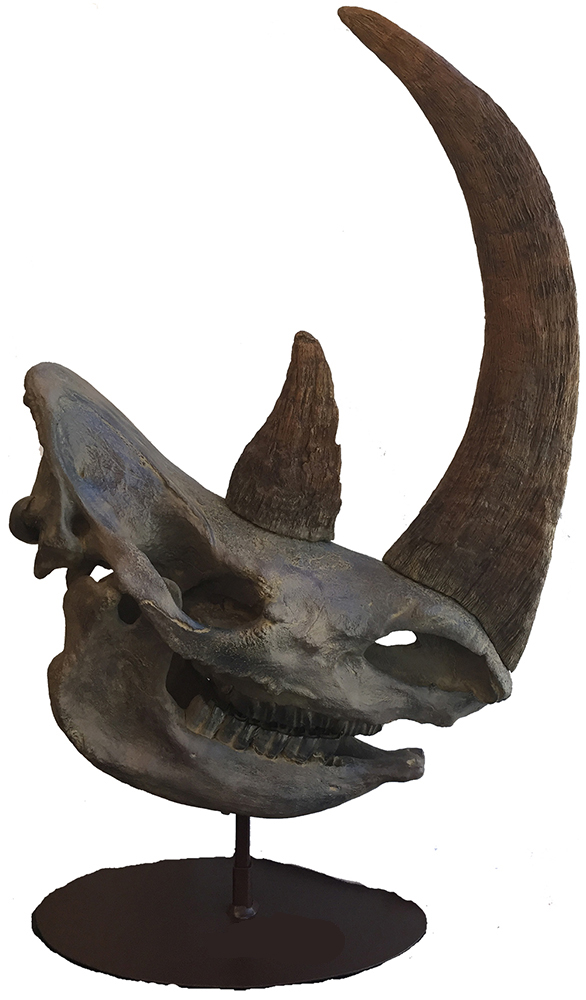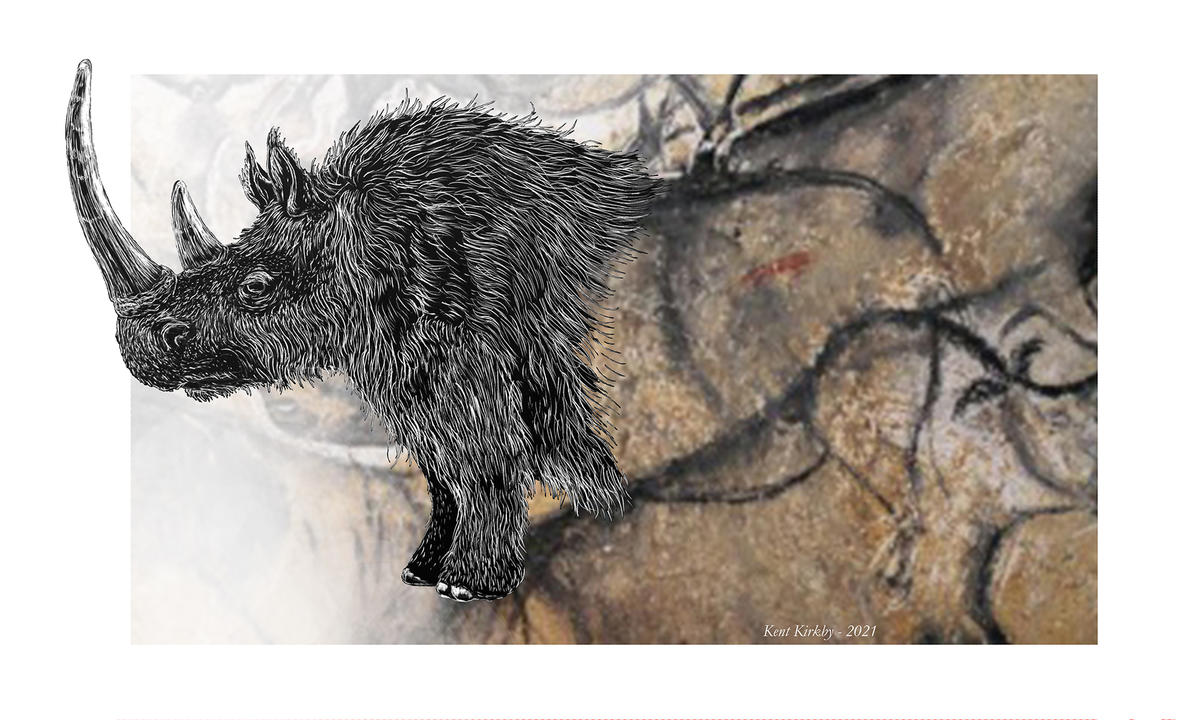Quaternary (~1.6-0.01 MYA) - perissodactyl mammal

Woolly Rhinoceros - Coelodonta antiquitatis
As recently as 8,000 years ago, woolly rhinoceros roamed the northern steppes of Eurasia. Their ancestors arose over 3.5 million years earlier, in the cold Tibetan Plateau of the Himalayas. However, as the Isthmus of Panama formed on the opposite side of the Earth, ocean circulation patterns shifted to plunge our planet into a period of Ice Ages that allowed woolly rhinos to spread much further north, although it did not cross Beringia to reach North America. Growing to four meters in length, two meters in height, and weighing up to two thousand kilograms, we not only know its appearance from skeletal remains, but from mummified individuals found in melting Siberian ice. As well as beautiful parietal images (cave paintings) of woolly rhinoceros created by the humans who shared their world.
As with other rhinoceros, the two horns on the skull were composed of keratin, rather than bone and were present in both sexes. Although woolly rhinoceros may have used their horns in defense or social displays, wear patterns on the horns also suggest they swept their horns back and forth to clear snow from buried grasses. In life, the woolly rhinoceros’ other distinguishing characteristics were long thick reddish-brown fur, small ears, a stout body, and short, stocky legs – features that helped minimize heat loss during cold arctic winters. Woolly rhinoceros’ range probably expanded and contracted with the growth and melting of ice sheets, with herds migrating long distances to keep pace with shifting environments.
Like living rhinoceros, woolly rhinos were hind gut fermenters which allowed them to feed on less nutritious vegetation, like the grasses and sedges that characterized cold and arid steppe-tundra environments. The presence of a large diastema (tooth gap) at the front of the mouth and a broad muzzle reflect this generalized foraging and digestion style. The genus name ‘Coelodonta’ comes from the Greek words for ‘hollow’ and ‘tooth,’ which refers to natural depressions present in woolly rhino molar teeth that do not occur in living rhinos. Hence, the full species name means ‘hollow tooth of antiquity.’ The huge pre-molars and molars (three each in both jaws) had thickened enamel and were high crowned to withstand heavy abrasion from silica-bearing grasses and sedges. A thick layer of cementum coated their roots to support and anchor the teeth. This impressive dental array was large enough to require other alterations to the skull’s design. The large crests along the skull’s back provided huge surface attachment areas for powerful neck muscles that supported the massive head.
Although climate change undoubtedly stressed populations, woolly rhinoceros most likely died out due to human predation. Not only did woolly rhinoceros represent a considerable supply of meat, but their thick fur pelts were undoubtedly valuable to people struggling to survive harsh conditions.
